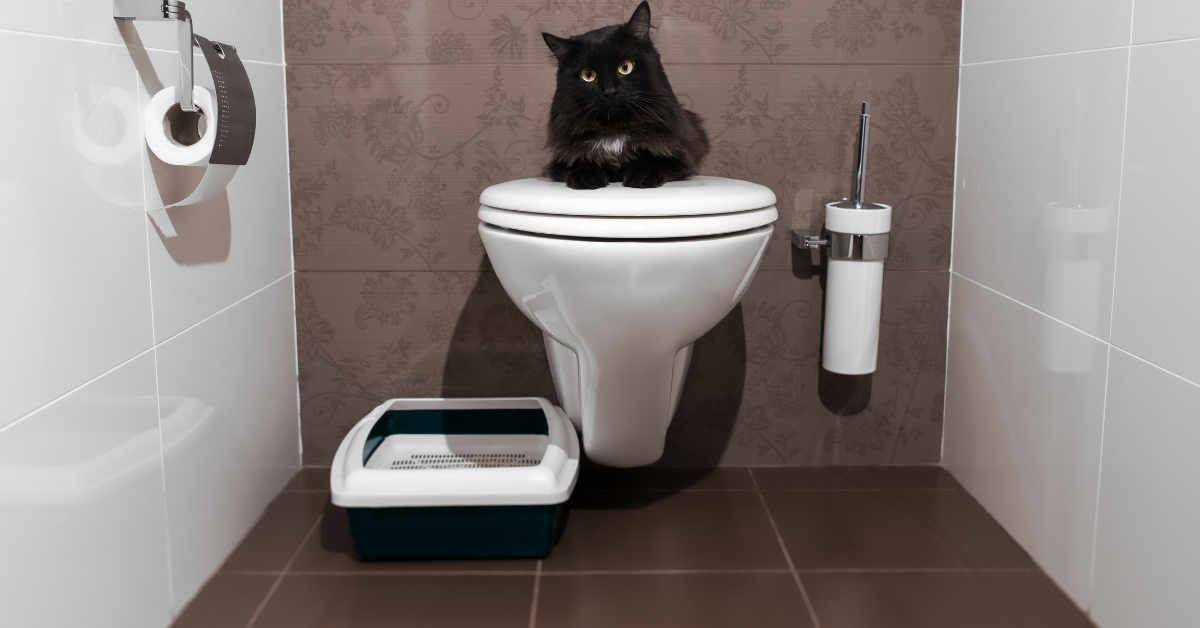Prevent Clogs and Damage: Never Flush Cat Poop Down Your Toilet - Professional Insights
Prevent Clogs and Damage: Never Flush Cat Poop Down Your Toilet - Professional Insights
Blog Article
What are your insights and beliefs on Can You Flush Cat Poo or Litter Down the Toilet??

Intro
As feline proprietors, it's vital to be mindful of how we get rid of our feline close friends' waste. While it may seem practical to purge pet cat poop down the toilet, this method can have detrimental consequences for both the environment and human wellness.
Ecological Impact
Purging pet cat poop introduces harmful pathogens and parasites into the supply of water, positioning a significant risk to marine ecological communities. These pollutants can negatively impact marine life and compromise water quality.
Health Risks
Along with ecological worries, purging cat waste can also pose wellness dangers to humans. Cat feces may have Toxoplasma gondii, a parasite that can trigger toxoplasmosis-- a possibly serious health problem, specifically for expecting females and people with weakened body immune systems.
Alternatives to Flushing
Fortunately, there are more secure and a lot more responsible means to take care of cat poop. Think about the following options:
1. Scoop and Dispose in Trash
The most usual approach of disposing of pet cat poop is to scoop it right into an eco-friendly bag and throw it in the garbage. Make sure to use a committed trash scoop and deal with the waste promptly.
2. Usage Biodegradable Litter
Choose biodegradable feline litter made from products such as corn or wheat. These litters are eco-friendly and can be safely gotten rid of in the garbage.
3. Bury in the Yard
If you have a yard, take into consideration burying pet cat waste in a marked location away from veggie yards and water sources. Make sure to dig deep enough to stop contamination of groundwater.
4. Install a Pet Waste Disposal System
Buy an animal garbage disposal system particularly designed for pet cat waste. These systems use enzymes to break down the waste, decreasing odor and environmental effect.
Verdict
Accountable family pet possession extends beyond supplying food and shelter-- it likewise includes correct waste management. By avoiding purging cat poop down the commode and opting for alternative disposal methods, we can minimize our environmental footprint and safeguard human wellness.
Why Can’t I Flush Cat Poop?
It Spreads a Parasite
Cats are frequently infected with a parasite called toxoplasma gondii. The parasite causes an infection called toxoplasmosis. It is usually harmless to cats. The parasite only uses cat poop as a host for its eggs. Otherwise, the cat’s immune system usually keeps the infection at low enough levels to maintain its own health. But it does not stop the develop of eggs. These eggs are tiny and surprisingly tough. They may survive for a year before they begin to grow. But that’s the problem.
Our wastewater system is not designed to deal with toxoplasmosis eggs. Instead, most eggs will flush from your toilet into sewers and wastewater management plants. After the sewage is treated for many other harmful things in it, it is typically released into local rivers, lakes, or oceans. Here, the toxoplasmosis eggs can find new hosts, including starfish, crabs, otters, and many other wildlife. For many, this is a significant risk to their health. Toxoplasmosis can also end up infecting water sources that are important for agriculture, which means our deer, pigs, and sheep can get infected too.
Is There Risk to Humans?
There can be a risk to human life from flushing cat poop down the toilet. If you do so, the parasites from your cat’s poop can end up in shellfish, game animals, or livestock. If this meat is then served raw or undercooked, the people who eat it can get sick.
In fact, according to the CDC, 40 million people in the United States are infected with toxoplasma gondii. They get it from exposure to infected seafood, or from some kind of cat poop contamination, like drinking from a stream that is contaminated or touching anything that has come into contact with cat poop. That includes just cleaning a cat litter box.
Most people who get infected with these parasites will not develop any symptoms. However, for pregnant women or for those with compromised immune systems, the parasite can cause severe health problems.
How to Handle Cat Poop
The best way to handle cat poop is actually to clean the box more often. The eggs that the parasite sheds will not become active until one to five days after the cat poops. That means that if you clean daily, you’re much less likely to come into direct contact with infectious eggs.
That said, always dispose of cat poop in the garbage and not down the toilet. Wash your hands before and after you clean the litter box, and bring the bag of poop right outside to your garbage bins.
https://trenchlesssolutionsusa.com/why-cant-i-flush-cat-poop/

We were made aware of that editorial about Don’t flush cat feces down the toilet through someone on our other web blog. Sharing is nice. Who knows, you might be helping someone out. Many thanks for your time. Please check our website back soon.
Get Estimate Report this page